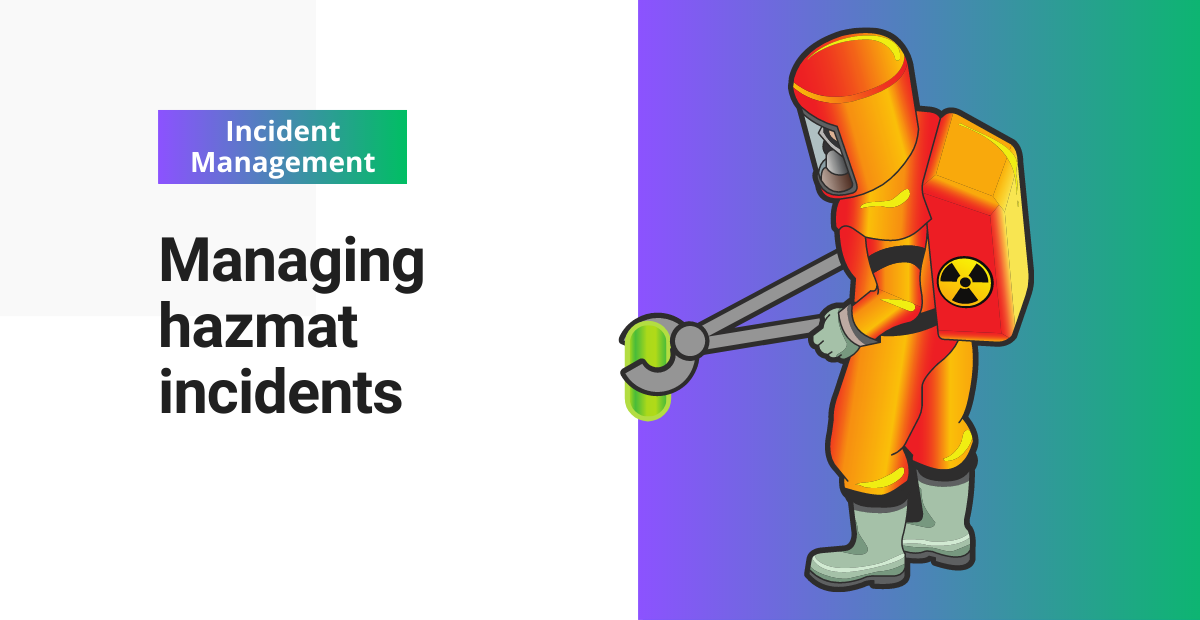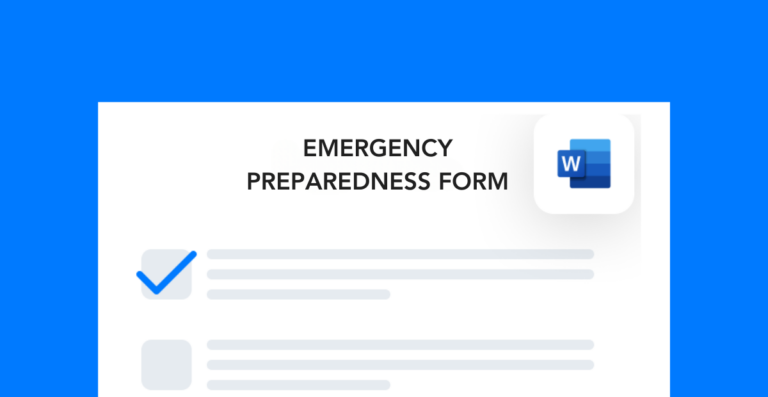Managing hazmat incidents involves controlling the situation and mitigating the risks. When dealing with these situations, it’s important to follow a similar procedure each time. That way, you can easily compare incidents and find new ways to prevent them in the future.
Using the incident command system (ICS)
Most fire departments have a hazmat response team and an incident command system (ICS). The purpose of an ICS is to make coordination across different teams easier.
You should have a designated incident commander (IC) at your facility. This person is responsible for managing the situation and coordinating with the local ICS. Typically, the incident commander is the highest-ranking person onsite for each shift. When you hand shifts over, you’ll need to hand over the IC responsibility, too.
If a hazmat incident happens, you’ll need to notify your local emergency services department of the details:
- What happened?
- Is anyone hurt?
- Is there an immediate threat to the community?
- What are the next steps for controlling the situation?
Most municipalities follow the risk-based response process called APIE which stands for analyze, plan, implement, and evaluate. It basically provides a framework that emergency personnel can use to respond to hazmat incidents.
8 steps for managing hazmat incidents
As an operations manager or EHS professional, here are the 8 basic steps you can follow for managing hazmat incidents:
- Control the scene and evacuate (if necessary)
- Notify employees and emergency services
- Assess the risk level
- Identify the source of the problem
- Coordinate emergency resources
- Decontamination of people and equipment
- Implement corrective action
- Document and report the incident
Your hazmat incident report should include:
- Incident details (location, injuries, damages, etc.)
- Root cause analysis
- Immediate corrective action
- Future incident prevention strategy
- Supporting documentation (photos, videos, diagrams, etc.)
Correct PPE in hazmat incidents
Another major component of hazmat situations is knowing the right PPE for workers to use. There are four levels of PPE to consider:
1. Level A: Encapsulated chemical and vapor protective suit with a self-contained breathing apparatus (SCBA)
2. Level B: Hooded chemical-resistant clothing with an SCBA
3. Level C: Full-face air-purifying respirator, inner and outer chemical-resistant gloves, an escape mask, and chemical-resistant boots
4. Level D: Face shield, chemical-resistant boots, coveralls, safety glasses, and chemical-resistant gloves
Figuring out the appropriate PPE level is critical for preventing injuries at the scene. The last thing you want is for your incident responders to get hurt while trying to help.
Different zones in hazmat incidents
In all hazmat incidents, these are the three zones that the incident commander needs to know to keep everyone safe.
The hot zone
The hot zone is the immediate area where the incident occurred and where the greatest risk of exposure exists. It typically extends about 100 to 200 feet in all directions. Typically, only trained and equipped personnel should enter this area, and they should wear appropriate PPE to avoid hazmat exposure.
The warm zone
The warm zone is where decontamination takes place nearby the hot zone. It’s usually 100 to 200 feet away from where the incident occurred and serves as a buffer between the hot and cold zones. Responders may need to wear PPE in this area, but less so than the hot zone.
Cold/cool zone
Finally, the cold zone is the area farthest away from the incident where support functions take place. It’s located more than 200 feet from the hot zone, and it’s where you can find the command centers, medical treatment areas, and equipment staging areas. The personnel in this area do not need to wear PPE, but they may need to wear protective clothing, such as reflective vests.
Hazmat incident documentation
Aside from the cleaning up process, the most time-consuming step in managing hazmat incidents is documenting them. But the documentation process is critical for understanding the underlying causes and controlling them in the future.
Your team should have a standard way of compiling reports, so that you can easily communicate the details both internally and externally. The best way to oversee the documentation process is with incident management software.
A system like Frontline ACT, for example, gives you full control over the process by allowing you to:
- Create and assign action items for your team to complete
- Compile incident reports quickly
- Set up notifications and reminders of upcoming or past due tasks
- Upload supporting documentation like photos and videos
- See your team’s progress on the steps in the incident management process
But whether you use software or create your own manual process, the most important element is the quality of the information you gather. Getting employees and managers more involved in the incident investigation process is a great way to boost engagement and get better results from your incident deep dives.
Other posts you might like…
No posts

